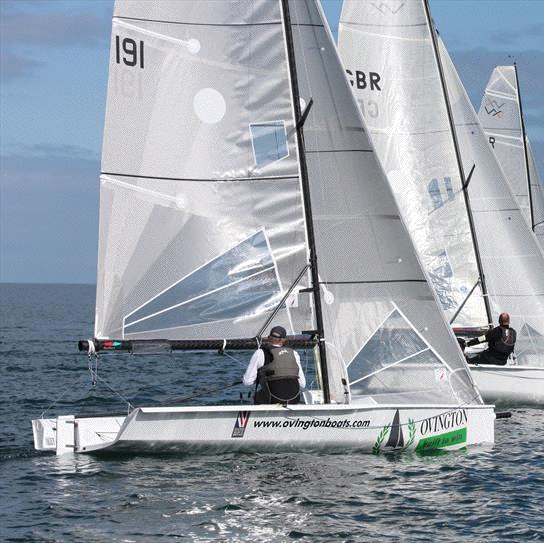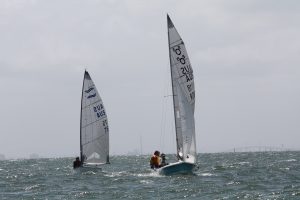

If You’re Slow – Ease For Speed
Sails require airflow across the leeward side. A sail stalls when airflow detaches from the back of the sail and is indicated when the leeward telltales fly forward or upwards.
Generally, the top part of the sail will stall first and by the time that you are visually aware of it, you have already lost the sails optimum sailing angle.
Knowing the right time to ease the sheet when sailing through a lull, gust, pinching or footing off through waves will give you superior speed to fellow competitors.
Ease after Pinching
If you sail into a header and are not quick enough to react, it doesn’t take long to luff the front of your sail and slow you down.
The initial reaction is to sheet on tighter but once you’ve established that your course is too high and make the adjustments back down to your optimal upwind angle, your boatspeed is slower than a boat that didn’t pinch.
Easing the sheet will momentarily relieve the stall induced by being slowed. Then trim your sails to the new apparent-wind angle until you’re back up to speed.
FREE CHAMPIONSHIP SAILING GLOVES
Drag
The two components of drag are:
1. underwater drag from hull friction that can be increased by chop and swell, and
2. drag that comes from a sail setup that is too deep and has excessive leach hook.
In moderate wind, it’s useful to keep some hook, as it helps to power through chop.
When you have reached top speed and your apparent wind moves forward, trimming your sails to have less leach hook will decrease drag in some conditions.
Sheeting out before the boat has slowed will maintain force in the sails and help you stay at speed.
In windier conditions, this stalling is perceived in the helm as a lift. When your bow hits a wave, the apparent wind moves aft, heels the boat and gives you the feeling of heading up.
In bigger swells, it’s OK to steer up to keep your heel angle consistent. However, in most conditions, extra weather helm tells you that there is extra drag.
Again, easing the sheet for the new apparent-wind direction is a crucial part of re-acceleration.
Ease In The Gusts
Ease the main when a puff hits, thus trimming the sails to the new apparent-wind direction.
A puff causes the boat to heel as true wind force increases and pulls the apparent wind aft so resist the urge to treat this as a lift.
SAILING TO WIN BOOK AND BONUSES
Entering a Lull
You can generally see a lull coming by noticing the lighter shading on the water.
When sailing into a lull in a boat that carries momentum, momentarily sheet on, blading the sail to reduce drag. Your apparent wind moves forward so avoid the temptation initially to bear away.
After slowing, the apparent wind shifts aft and requires a more forgiving sail setup that provides more power.
On dinghies where mainsheet changes mast bend, sheet out to increase camber in the top of the sail.
On boats where the mainsheet affects leech twist, easing to open it increases the velocity across the leeward side of the top of the sail.
Stay active with the mainsheet, easing for optimal sail force and apparent wind direction changes.

